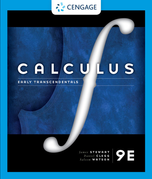?The figure shows a pendulum with length \(L\) that makes a maximum angle \(\theta_{0}\)
Chapter 7, Problem 42(choose chapter or problem)
The figure shows a pendulum with length \(L\) that makes a maximum angle \(\theta_{0}\) with the vertical. Using Newton's Second Law, it can be shown that the period \(T\) (the time for one complete swing) is given by
\({T}=4 \sqrt{\frac{L}{g}} \int_{0}^{\pi / 2} \frac{d x}{\sqrt{1\ -\ k^{2} \sin ^{2} x}}\)
where \(k=\sin \left(\frac{1}{2} \theta_{0}\right)\) and \(g\) is the acceleration due to gravity. If \(L=1 \ {m}\) and \(\theta_{0}=42^{\circ}\), use Simpson's Rule with \({n}=10\) to find the period.
Equation Transcription:
L
T
T = 4 ∫
k = sin ()
g
L = 1 m
= 42°
n = 10
Text Transcription:
L
theta_0
T
T = 4 sqrt L/g integral _0 ^pi/2 dx/sqrt 1-k^2 sin^2 x
k = sin (½ theta_0)
g
L = 1 m
theta_0 = 42^circ
n = 10
Unfortunately, we don't have that question answered yet. But you can get it answered in just 5 hours by Logging in or Becoming a subscriber.
Becoming a subscriber
Or look for another answer
